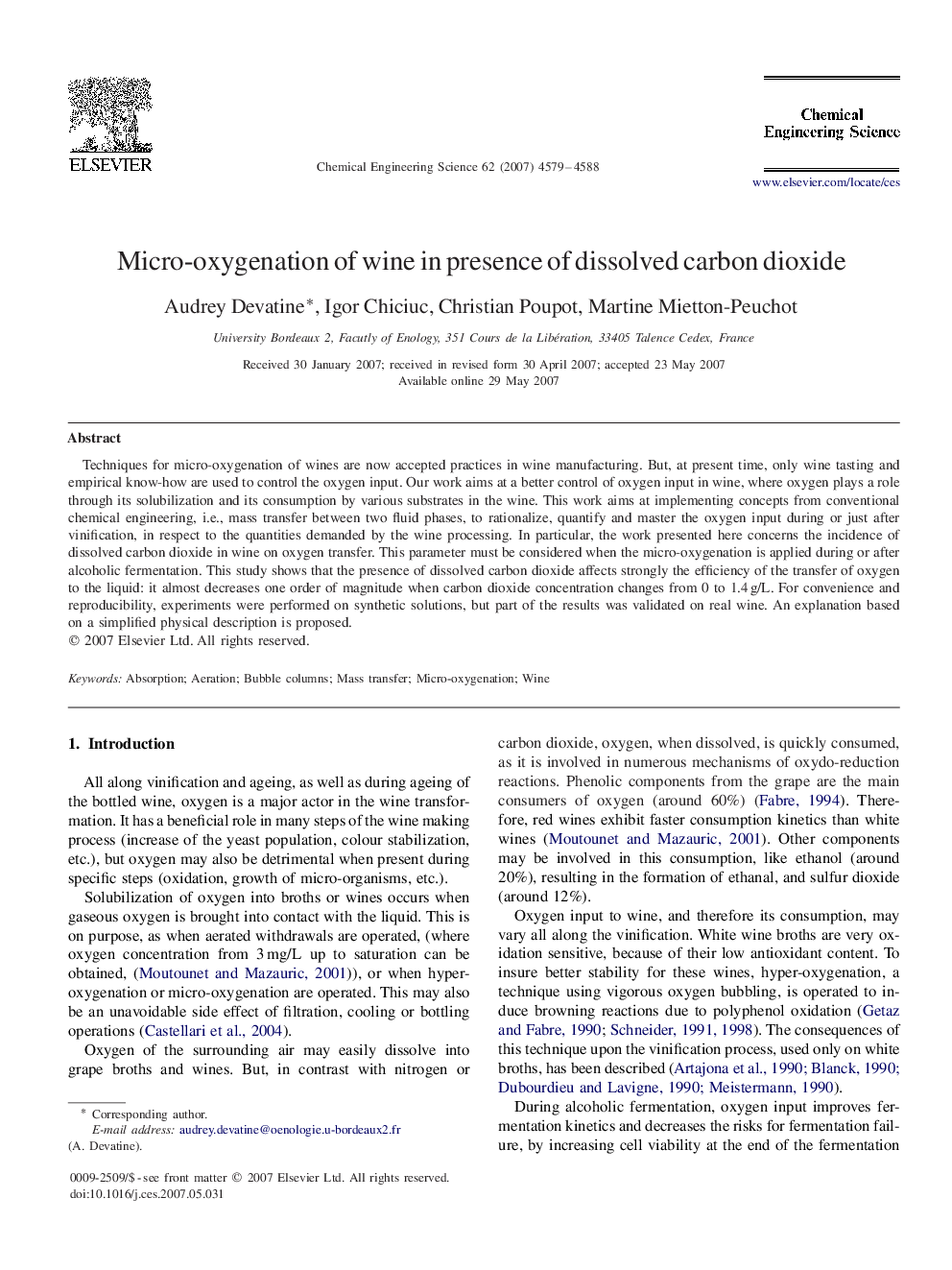| Article ID | Journal | Published Year | Pages | File Type |
|---|---|---|---|---|
| 159026 | Chemical Engineering Science | 2007 | 10 Pages |
Techniques for micro-oxygenation of wines are now accepted practices in wine manufacturing. But, at present time, only wine tasting and empirical know-how are used to control the oxygen input. Our work aims at a better control of oxygen input in wine, where oxygen plays a role through its solubilization and its consumption by various substrates in the wine. This work aims at implementing concepts from conventional chemical engineering, i.e., mass transfer between two fluid phases, to rationalize, quantify and master the oxygen input during or just after vinification, in respect to the quantities demanded by the wine processing. In particular, the work presented here concerns the incidence of dissolved carbon dioxide in wine on oxygen transfer. This parameter must be considered when the micro-oxygenation is applied during or after alcoholic fermentation. This study shows that the presence of dissolved carbon dioxide affects strongly the efficiency of the transfer of oxygen to the liquid: it almost decreases one order of magnitude when carbon dioxide concentration changes from 0 to 1.4 g/L. For convenience and reproducibility, experiments were performed on synthetic solutions, but part of the results was validated on real wine. An explanation based on a simplified physical description is proposed.
